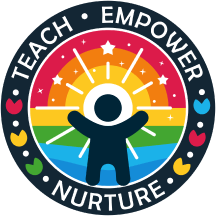Introduction:
Visualization is a powerful tool that can help children achieve their goals and build confidence. By imagining positive outcomes and mentally rehearsing their actions, children can enhance their performance and develop a growth mindset. This blog will explore the benefits of visualization and provide practical tips for parents and educators to teach this valuable skill to children.
Understanding Visualization
Visualization involves creating mental images of desired outcomes. It is a technique used by athletes, performers, and successful individuals to enhance their performance and achieve their goals. For children, visualization can be a powerful way to build confidence, reduce anxiety, and improve focus.
Steps to Teach Visualization
1. Explain the Concept: Start by explaining what visualization is and how it can help. Use simple language and examples that children can relate to.
2. Guide a Visualization Exercise: Lead children through a visualization exercise. Ask them to close their eyes and imagine a positive outcome for a specific situation, such as doing well on a test or making a new friend.
3. Encourage Regular Practice: Like any skill, visualization improves with practice. Encourage children to spend a few minutes each day visualizing positive outcomes for their goals and challenges.
Age-Appropriate Visualization Exercises
• Younger Children: Use guided imagery with simple scenarios. For example, ask them to imagine their favorite place and describe what they see, hear, and feel.
• Older Children: Encourage them to visualize specific goals, such as scoring a goal in soccer or giving a successful presentation at school. Ask them to imagine the steps they will take to achieve these goals.
Success Stories and Benefits
Visualization has been shown to improve performance and confidence in children. For example, a study published in the Journal of Applied Sport Psychology found that children who used visualization techniques performed better in sports and reported higher levels of self-confidence. Additionally, success stories from parents and educators highlight how visualization has helped children overcome anxiety and achieve their goals.
Conclusion:
Teaching children the power of visualization can equip them with a valuable tool for success. By incorporating visualization exercises into daily routines, parents and educators can help children build confidence, reduce anxiety, and achieve their goals. For more resources and support on fostering positive mindsets in children, visit TEN-Teach Empower Nurture at www.tenyourmind.com



